#regression testing in an agile
Explore tagged Tumblr posts
Text
Beyond the Bugs: Strategies for Effective Software Testing
The value of efficient software testing has grown in the ever-changing field of software development. While identifying and resolving defects is a crucial step in the process, effective testing goes beyond this. In order to achieve a thorough strategy that guarantees software products that are dependable, strong, and of the highest caliber, we explore techniques in this article that go beyond the conventional limits of software testing.In the vibrant city of Bhopal, where technological advancements are shaping the future, the need for skilled software testers is more crucial than ever. To equip yourself with the knowledge and expertise needed for the dynamic field of software testing, consider enrolling in the best Software Testing course in Bhopal,Moradabad, Delhi, Noida and all cities in india.
0 notes
Text
Automation Testing Insights: Transforming Testing
The global automation testing market size is expected to reach USD 92.45 billion by 2030. Prominent technological advancement in artificial intelligence (AI) and machine learning (ML) is propelling the demand for the market. Mobile application usage is growing across various end-user industries, and smartphone penetration is rising, opening an attractive potential for market expansion. Furthermore, there is a rising demand for automation testing as web-based applications have developed significantly and new software technologies have emerged. The market is growing rapidly due to the increasing usage of ML and AI for advanced analytics and continuous testing across DevOps and DevSecOps areas.
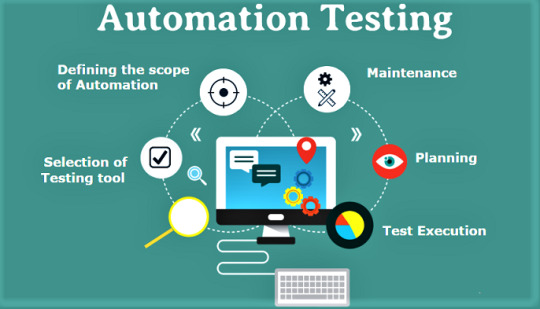
Automation Testing Market Report Highlights
The services segment dominated the market and accounted for over 56% of the global revenue owing to rapid advancements in implementation services, which make it easier to include automation into a functioning infrastructure for software testing
With the aid of this service, automation is integrated into an existing software automation testing setup
The large enterprises segment held the largest revenue share in 2022 as it helps improve efficiency, reduce manual effort, increase test coverage, and ensure the quality of software applications
The BFSI segment is estimated to have significant growth over the forecast period; adopting digitalization in the BFSI sector creates a significant demand for application software automation testing
Gain deeper insights on the market and receive your free copy with TOC now @: Automation Testing Market Report
The emerging use of RPA to automate time-consuming, error-prone manual processes are just a few instances of the usage of AI & ML in automation testing. Moreover, a bot uses the page’s numerous links and web forms to systematically explore through an online application when web crawling or spidering. This is a new use for AI and ML in automation testing. This approach is typically used for indexing online browsing. It may be improved further to perform reverse engineering on an application being tested and automatically find Test Cases. Emerging automation testing tools are significantly fueling market growth.
For instance, Testcraft, a codeless Selenium test automation platform for regression and continuous testing, as well as monitoring of web applications, is gaining traction among users. Their revolutionary AI tech removes maintenance time and cost, as it certainly affects changes in the app. Similarly, Applitools Eyes, Testim, and Test.ai are more automation testing tools propelling the market growth. Furthermore, mergers and acquisitions by other key players are propelling market growth. For instance, in 2022, to improve the user experience on 5G smartphones, Key sight introduced AI-driven and automated testing. Automation and AI enable mobile service providers and app developers to more swiftly evaluate how smartphone users engage with native apps in the real world.
#Automation Testing#Quality Assurance#Software Testing#Test Automation#Continuous Testing#Test Automation Framework#DevOps Testing#Selenium#Test Automation Tools#Performance Testing#Regression Testing#Agile Testing#UIAutomation#Test Scripting#Test Automation Engineer#Codeless Automation#Automation Strategy#CI/CDTesting#Test Automation Best Practices
0 notes
Text
Automated Testing vs. Manual Testing: Which One is Right for Your Project?

Achieving high-quality, reliable software stands as a fundamental requirement in software development. Successful testing functions as an essential tool to discover faults and build performance capabilities that create better user experience outcomes. Two main testing methods dominate the field: automated testing and manual testing. The process of quality software assurance uses different testing approaches that demonstrate their own advantages as well as weaknesses according to specific project requirements and scenarios. We will explore the specifics to determine which testing process works best for your system development efforts.
1. What Is Manual Testing?

Manual testing involves a human tester manually executing test cases without using automation tools. Key Characteristics:
The methodology focuses its efforts on user interface together with usability and experience testing.
Human-centered applications where selection requires discretion include ad hoc testing and enumerative testing as well as examinations that need human evaluation.
Human performers are required during this approach; thus, it demands substantial time.
2. What Is Automated Testing?
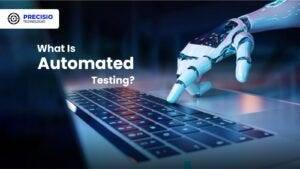
Software performing automated testing executes test cases through workflows and helpers. Key Characteristics:
Efficient for repetitive and regression testing.
Users must spend money on tools along with developing custom scripts for testing.
Reduces human error.
3. Advantages of Manual Testing

Human Intuition: Software testing professionals can detect kernels through their human cognitive ability that automated tools cannot match. The observation and evaluation of visual elements runs more efficiently through human operatives instead of advanced tools.
Flexibility: This method suits exploratory testing specifically because there are no pre-determined scripts available.
Low Initial Investment: Running this approach does not need tool purchases or applications to develop automation frameworks.
Adaptable for UI/UX Testing: Running this approach does not need tool purchases or applications to develop automation frameworks.
4. Advantages of Automated Testing
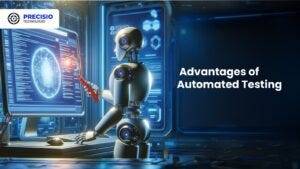
Speed: Executes repetitive tests much faster than humans.
Scalability: The system proves most effective for extensive projects that need constant system updates.
Accuracy: When performing recurring actions, automated systems minimize the chances of human mistakes.
Cost-Efficient in the Long Run: Once established and implemented, the system demands costly investments but ensures continuous development expenses decrease over time.
Better for CI/CD Pipelines: Such testing technology connects various development pipelines that support agile and DevOps methodologies.
5. Disadvantages of Manual Testing

Time-Consuming: The manual performance of repeated tests leads to delayed completion of projects.
Error-Prone: Large applications contain tiny bugs that human testers commonly fail to detect.
Not Ideal for Scalability: The process of increasing manual testing needs additional testers to avoid cost escalations.
6. Disadvantages of Automated Testing
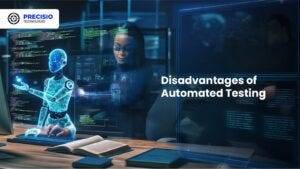
Initial Costs: Organizations must provide high financial resources to procure testing tools together with developing programming constructs.
Limited to Pre-Defined Scenarios: These testing approaches work poorly for handling exploratory or ad hoc testing.
Requires Maintenance: Test scripts need frequent updates when application changes occur.
Not Suitable for UI/UX Testing: Struggles with subjective user experience evaluations.
7. When to Use Manual Testing
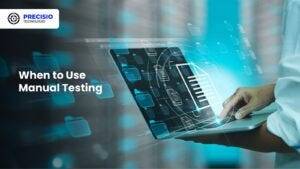
Small Projects: The testing method proves beneficial at a low cost for small applications and provides quick assessments.
Exploratory Testing: Testing this approach benefits projects whose scripts have not been defined yet or need evaluation for newly added features.
Visual and Usability Testing: Performing assessments on interface components together with design features.
8. When to Use Automated Testing

Large Projects: Handles scalability for projects with frequent updates.
Regression Testing: Program testing becomes more efficient through automation since automated assessments perform multiple tests following each update process.
Performance Testing: The system performs efficient capabilities to conduct load testing and stress testing.
Continuous Development Environments: Agile progression and DevOps implementations need automation as a core requirement.
READ MORE- https://www.precisio.tech/automated-testing-vs-manual-testing-which-one-is-right-for-your-project/
2 notes
·
View notes
Text
Finding a Home

AN: This is the first story I've written in years but a friend of mine convinced me to come back to Tumblr so I thought I could share it here. I've spent years reading fic wonderful fic but most never had a character I could identify with in the fandoms I enjoyed so I made this. This is a made-up story with real-life events weaved in.
Pairing: Scarlett Johannason/ Elizabeth Olsen
Word Count: 5,105
Chapter: 1/?? (32 chapters posted on AO3)
Chapter Trigger/Content Warnings: Mention of Abuse, Violence, Non-Sexual Age Regression, and Bullying.
Summary: After landing the role of a lifetime In the film Black Widow 2, Cade Jones goes to LA where he meets Scarlett Johansson and Elizabeth Olsen. During the summer they film the movie and Cade plays Scarlett's son but over time it's not acting anymore and Scarlett and Lizzie find the missing piece of their family, but not without a lot of bumps along the road. This story is set in a real world with real people mixed in with the MCU movies alternate universe that is also set in an omegaverse, so Alpha Beta and Omega dynamic as well as non-sexual age regression, abuse, and violence. This is a bad summery just give it a read if you want.
ENJOY!
Chapter 1: A New World Beckons
In the ancient times of our ancestral wolf packs were the dominant species. Packs, Everton, Sereno, Trevino, Whitlock, and Villarreal were the five foundational packs from which all wolves trace their lineage. These packs were considered as the true Adam and Eves of the world.
Within the wolf , there existed a select group known as the Prime Wolves. The original Primes being half breds of a wolf and human, these individuals were the largest, strongest, and most highly regarded members of the wolf society. When in their wolf form, Prime Wolves experienced heightened senses, granting them acute perception, heightened awareness, and incredible speed. They were the epitome of physical strength and agility, surpassing even the capabilities of regular wolves and their fellow Primes.
The Primes possessed the remarkable ability to shift freely between their wolf and the other dominant race the human form, exhibiting complete control over their shifting abilities. They were revered as the highest echelon of wolf society.
Among the Prime Wolves, one individual stood out with great renown: Gabriela Villarreal. As a true Prime, akin to the original five, Gabriela possessed even more extraordinary abilities. In addition to the heightened senses of a wolf and the enhanced physical prowess of a Prime Wolf, Gabriela possessed a unique healing ability. With her saliva, she had the power to mend any wound, making her an invaluable healer within her pack and the wider wolf society.
However, as time passed and evolution took its course, the ability to shift and control one's wolf form gradually became dormant in the human form of most wolves. Though the primal connection remains, the majority of wolves nowadays are unable to access their shifting abilities, resembling a mere fraction of the once-powerful Primes.
In this wolf society, a social hierarchy is structured based on status. At the age of 16, individuals undergo testing to determine their place within the hierarchy. The three main statuses are Alpha, Beta, and Omega, which define an individual's rank and role within the pack. Additionally, there are umbrella categories that specify an individual's personality traits and inclinations, such as Dominants, Submissive's, Neutrals, Switches, Caregivers, and Littles.
The lore of the ancestral wolf packs and the legendary Primes adds depth to the understanding of the wolf world. It reveals the extraordinary origins of the wolves and their connection to the primal energy that still resides within them. While the ability to shift and control the wolf form has diminished over time, the legacy of the wolf culture lives on, inspiring curiosity and controversy among those who still have the ability to shift.
Sunday MAY 28th Cade’s POV
I was completely filled to the brim with stress and anxiety today and that was to say a lot since the last month of my life had been so crazy anxiety should be my middle name. In fact, I didn't even know if I had a middle name. The only name I knew was Cadence Jones. I preferred Cade though, no one ever mentioned if I had a middle name. When I was old enough to realize that I was different from other kids I was probably 4. That's when I was first told my parents left me at a random fire station not too long after I was born, just a small pup left on my own, not that I really understood what that really meant at a young age.
I was 5 when my first foster parents took me back to the group home saying something was wrong with me. I was too shy, scared, and stupid to learn anything or even talk. I had said my first word yet and I spent more time crying than anything else. They were looking for a kid that would fit into their alpha pack dynamic better than me. However, that wasn’t the case, at the time I was already reading and writing at an advanced grade level and probably one of the brightest kids in my class. I just couldn’t seem to vocalize anything yet and I was a bit more timid than the other kids my age.
When I was 6 I was adopted by a family that surrendered me back to the care of the state after only a year. That was around the time I really started to express myself and start speaking but barely and instead of wanting to be dressed in dresses and skirts I wanted to wear what my adopted brother was wearing at the time. Shorts, t-shirts, and comfortable clothes so I could go out and play like him. It got to the point I would scream, fight, and cry for hours on end if I put in something I didn't like.
So in turn I was labeled as a temperamental child, crazy even having meltdowns constantly. I typically scared off anyone who showed interest in fostering or adopting me while I was still young. Most couples didn't want to deal with all my issues and were looking for an easy kid to start out with.
I was later diagnosed with a speech impediment, autism, a sensory disorder, anxiety, and selective mutism, as a child and you can’t process these things very well. It becomes hard to function without specialized care and being raised in foster homes as a kid you never really got that.
After about two years living in a group home, I was staying with a nice family in Reno. They openly accepted me and all my perceived issues weren't issues for them and I was slowly becoming part of their pack.
They had even taught me sign language so I could communicate better with others when I wasn't able to speak and put me into speech therapy to help me develop my communication skills and fix my speech impediment. I had the most trouble with R’s,W’s,S’s and still do to this day.
I lived with them from the age 8-14 the longest I had ever stayed with one family. It was great I had made friends and really enjoyed life. Like every other kid my age this was when we all started going through the early stage of puberty and finding out who we were. This is when you typically start to see alpha, omega, or beta traits start to present. I however never showed clear signs.
It wasn't until I was about 11 when I really became self aware and realized to everyone else I was a girl, but I had honestly thought I was a boy until another boy asked me why I acted like a boy if I was a girl. I didn't answer, just ran away but then I knew I was different from others. After that I consciously began identifying outward as a male more, basically as much as I could, but this caused a lot of kids to start picking on me at school. There weren't a lot of transgender kids running around so I stood out from other kids.
My best friend, Preston James Striker the 4th, but most people just called him Striker growing up. He was always hitting stuff when he was little and when he got older he started fighting a lot and was a good one at that. Striker was my true savior most of the time, he would instantly shut down the bullies that tormented me and his family's pack unofficially took in and accepted me as their own. I spent more time with them than with my foster family. Striker’s dad, Preston James Striker the 3rd, owned a fighting and free-running gym called Strike Force Gym, so over those six years I spent most of my time in the gym learning how to defend myself.
They taught multiple fighting styles, having instructors from all over the world teaching their specialized crafts. I liked the styles of martial arts, taekwondo, and jiu jitsu the most. Preston always said I was a true boxer at heart with how powerful my punches actually are and how quick my reflexes were for a kid my size. I was constantly hyper aware of everything all the time so it came easy for me to be extremely instinctive and reactive in a fight.
I was especially good at free-running as whenever I was running and jumping around the gym or out in the city I felt the most relaxed and free from everything else in life. Even though I got quite good at fighting I never seemed to be able to use the skills outside the gym whenever my bullies decided to torment me next.
The foster placement I was with at the time didn't like all the ‘trouble’ I was causing whenever I would get into it with my bullies. Half the time they would do something bad and frame me for it. Then there was the one fight I got into when it couldn't be avoided and that got some police attention.
Around this time my foster mother was diagnosed with cancer and my foster father struggled with taking care of his sick wife and a preteen with special needs that was getting into trouble with the law and his older son who was away at college but struggling. So eventually he sat me down and explained that my social worker Melinda Gordon was going to be picking me up at the end of the week and I would be leaving and being placed with another couple.
I was 14 when I was placed into the care of The Davis’s. I've been staying with Kenneth and Joyce Davis for two years now. It was better than a group home because it was just the three of us but most of the time I was forgotten or pushed aside by the couple at the beginning.
They were mostly in it for the check the government sent and Joyce loved to parade me around like some kind of charity case for all her friends to see. She once told me I was sent to them by god so they could fix me so I could once again be a healthy and natural child of god.
The Davis are what they’d like to call Holy Folk. They were heavily involved in the community as Kenneth was a generational police officer and Joyce worked at the church and community center. I'm pretty sure they met in church when they were young and their parents arranged their marriage and lives from that moment on. Everyone loved them around the small town they lived in here in Idaho and thought they were just the best people on the Earth. In reality the second I was deemed out of line and nobody else was around the couple's sweet heavenly nature could turn in an instant.
They thought that the devil was inside of me and made me act this way and that they were god disciples reborn to cleanse my soul. I had major sensory issues, an anxiety disorder paired with selective mutism all on top of being a transgender child so naturally they thought I was possessed. They really had no education or awareness of any kind of how to properly care for an autistic child.
I remember my first Christmas with them. Their whole family pack was there and the loud party was in full swing when Kenneth’s mothers gave me a gift she made. She had knit me a wool sweater but upon putting it on it made my skin feel like it was on fire and I had immediately gotten pushed over the edge and into sensory overload and had a panic attack running to my room for the rest of the night. That night after everyone had left Kenneth had beaten me with the brand new belt he’d had gotten from one of his brothers. I had prayed to God that night before bed that it was the first and last time that would happen, unfortunate it was only the beginning.
It has only gotten worse for me in these last 5 months. When I turned 16 just like everyone else Joyce and Kennth took me in to get a status test. By then your traits should've already been presenting but this was the way to get the official status when your brain was developed enough.
Not everyone got tested right away as it was your free choice but most people do it. The human race was all originally evolved from the wolf so we all fell in the the dynamics of Alpha, Omega, and Beta and then you could fall under any of these six categories; Dominant, Submissive, Neutrals, Switch, Caregivers, and Littles. Sometimes people would have multiple classifications but mostly one prominent one that would stand above the rest. Now a days most people didn’t have the ability to shift like our ancestors did as it was a lost skill as modern civilization took over 100s over years ago. However there was a select few people that had pure enough wolf blood where they could shift. These wolfs were called Primes.
Kenneth was a Dominant Alpha and thought that any other status was basically unholy trash unless you were a married submissive Omega like Joyce was. When I took the test whether I was an Alpha, Omega, or Beta came out inconclusive and this made Kenneth pissed. Not only did I have an anxiety disorder and could barely speak but I was inconclusive basically a status in itself. One Kenneth hated and he never let me forget it.
It didn't happen often but there was about 15% of the world population that go a inconclusive status result so i wasn't the only one out there and most people that were inclusive later tested again in life and got a different result. That however didn't matter to the Davis as they were part of a proud pack that never had an inconclusive among them, so it was a big embarrassment for them.
It got to the point where I never really got a chance to be myself without the fear of getting beaten for it. There was really no expressing myself at all except for the perfect Cadence they wanted to see. I wasn’t allowed to join any training gyms because fighting wasn’t ladylike.
Skateboarding was another hobby I’d picked up but I wasn't allowed to do that either as it was a boys sport. I really only went to school, then headed to the community center where I’d help Joyce at her job, and then go back home after that. I had to be a good quiet girl that obeyed adults no matter what and if I did, then I just might be able to go to heaven and not suffer in hell for eternity.
I shook my head focusing back on the present situation at hand. I was currently on the train to LA. I had ended up in a car all to myself for the ride which was a lifesaver so I could panic in peace. It was a little longer than a two day train ride from Idaho to Los Angeles, but it was cheaper than the $469 plane tickets it would’ve been. I could barely afford the $211 train tickets, using all the money I had saved over the years. Whenever I did sn odd jobs for Joyce at the community center the Lady’s there would always hand me some money secretly without Joyce ever noticing, sometimes I wondered if they knew what was happening behind the facade Joyce and Kenneth put up. I never got that answer though.
As I sat and looked out the window I thought about the last month. Striker had sent me a casting call his dad had shown him. Marvel Studios had put out a call for a young man or woman between the age 13-19 who had skills in combat style fighting, gymnastics, and, or dancing. It was a completely open casting call for anyone to submit to either in person in LA or submit a tape online.
After Striker’s non stop badgering over text and calls I submitted an audition and sent in a video of me, Striker and some of the other guys at the gym free-running from back when I lived with them and a new sample of myself now free-running. After sending in the audition and not too long after I had gotten a call asking if I could do a couple more callback auditions over zoom. Then I was told I got the part. That’s when I found out I was going to be playing Anton Romanov, the son of the Black Widow Natasha Romanov and a mutant that Dreykov kidnapped for his powers. They told me that I needed to be in LA the next week.
That was today, there was going to be a dinner tonight for the cast, as a way to get together and all meet each other officially before filming started the following week.
The train came to a stop at union station in Los Angeles i heard over the speaker so I grabbed my duffle bag containing basically everything I owned, which wasn’t much just clothes, books, and my skateboard, a gift from Striker he secretly sent me when I turned 15 last year and I got off the train. It was 3pm and dinner wasn’t until 8pm. I checked my phone and saw that the restaurant we were supposed to meet at was in Hollywood that was about an hour or two away from here on my board. I pulled my wired headphones out of my bag, placing each bud in my ear and pulled the duffel bag over my shoulder pulling the straps tight to my body before heading off. As I was skating I called Striker.
“Brother! What’s up?” He said over the phone I could hear him clicking away at his playstation controller. Striker was a huge video game guy, he had collected probably every game console he possibly could.
“Hey Striker. I made it to LA.” I told him as I cruised down the city streets.
“Awesome! I'm jealous my parents would never let me go to LA all by myself.” He confessed as he paused his video game.
“Come on, you know Joyce and Kenneth have no idea I'm here. You're the one who made the fake website, what did you name it? Faithful Haven Camp and Retreat for Troubled Teens?” I told him with a laugh. Striker was probably one of the only people to see the true me and he felt like the safest person i had ever met. He was definitely the only person I could talk to without issue but he still respected the time I wasn't verbal and never pushed me to talk.
“Oh right? You're welcome by the way. So how is it? Have you seen anyone famous yet?” he asked.
“No, I've just only got here. Plus it's not like they're just running around everywhere. I'd assume they do their best to hide from the public.”
“Fair, you got me there. Just promise me when you meet all these famous marvel actors you get me every single one of their signatures for me okay?”
“We’ll see about that.” I told him Striker was just as much of a marvel fan as I was but he was just a lot more excitable about it.
“Preston James Striker. YOU better not be playing video games up there when I know you have homework.” I heard Striker's Mom yell, Charlotte Striker was a very sweet woman and one of the only people I could hear yell and not have it scare me because I knew she really meant no harm whatsoever.
“MOOOM, i'm on the phone with Cade and we haven't talked in weeks.” I rolled my eyes as he called out back, using me as an excuse to get him out of trouble as always.
“Tell him we say hi and bye. He might be on summer vacation but he didn't fail algebra 1 and has summer school to do.” I heard her say back and I chuckled. Striker groaned.
“Mrs. Harris, definitely had it out for me cause I'm great at math bro.” he told me and I laughed again.
“Well maybe if you paid attention in class I'd believe that.” When I went to school with Striker he could never sit still in class.
He was incredibly smart and we both were in a couple advanced classes together but everything bored him with school where I loved to learn new things and take on new information. I had an amazing memory where if I saw something or heard it long enough I could easily mimic or copy it. It was like I didn't have a speech impediment at all when I was consciously trying not to but when I talked naturally it always came back. I think this was the only reason I was able to act because it was easy to memorize the lines and become a different person than myself.
“Hey! you are supposed to be on my side, I'm hanging up now.” He said
“ Okay you're right she did sound like a bitch, is that what you want to hear?” I joked with him.
“Yess thank you my friend. Now I should go before my mom comes up here and she's me playing video games.” he told me.
“Okay i'll text you later. Bye.” Striker said goodbye and I heard the click of the phone call ending and my music started playing as I continued skating.
I was told that marvel would be putting me up in special accommodations or at least that was what it said in my contract. I figured that tonight someone would be able to show me where to go. So I just decided to head to the restaurant and hang out in that area until dinner.
After two hours I made it to Hollywood and was just hanging at a skatepark nearby to kill time. When I got there the bowl was empty so I headed in for a session.
I was really just messing around doing hand plants on the rims of the bowl or just throwing tricks as I skated around. As I came up over the edge for another hand plant, just as I’m upside down I see a blur and feel something collide with my board and I’m being knocked off course and falling into the bowl.
As I came crashing down I heard I chorus of laughter gasp and oohs. Not realizing that I had an audience as my body smacks the concrete hard and for a second all the wind is knocked out of me. An immediate pain in my left side radiates through my body and I groan. Taking a second to get my bearings, I see mine and another skateboard rolling around and there are a couple people on the edge of the bowl looking down at me.
“Hey, can you pass me my board?!” A shaggy blonde haired guy yelled down at me and started laughing at me with a couple others. I stood up and moved over to the boards. I threw the other board up and over the edge and then did the same with mine before running up the side of the bowl and hopping out. I stumbled a bit because of the pain in my side but got my balance quickly after.
“Sorry about that, it just slipped out of my hand?” I heard the blonde guy's voice say behind me and I turned to see him looking at me with a smirk. He didn’t seem very sorry and the way the board hit mine it had a lot more force than something that slipped.
Not saying anything I just was going to grab my stuff and leave. I knew how this worked. I've moved around enough to know that every once in a while there was always some territorial guy whether it was school, sports, or the skatepark that didn’t like the new kids coming in and messing with their system so I wasn’t even gonna fight him.
“Hey are you deaf or something?” He yelled in a dominating alpha voice causing my body to tense and freeze for a second. Him and his delinquent friends snickered and I rolled my eyes and continued on. Since i was inconclusive if any alpha used their Alpha voice it sometimes could affect me like it would an omega or submissive and It wasn't the first time I’d heard that one. I continued to ignore him and pick up my bag until I felt hands grab my arm and pull me back and around. I was quick to pull my arm out of the grasp but I soon realized I was face to face with the blonde and he was shoving me down to the ground.
“Well? are you deaf or just fucking dumb?” he said, towering over me pushing threatening pheromones out into the air. I quickly got back up and stood back trying to get out of his space but he followed my steps. I got into the side pocket of my bag and pulled out a laminated card I always have on hand trying to defuse the situation.
"It read: Hi I’m Cade I have an anxiety disorder called selective mutism. I am unable to speak in certain social situations. This is not a choice, it's an involuntary response, I’m not being rude."
I showed it to him and him and his buddies to read.
“ Okay, so just dumb. Either way I’ll make it simple for you. THIS. IS. MY. PARK. YOU. LEAVE.” He said to me slowing himself down like I couldn’t understand him. I rolled my eyes and just walked off. That's literally what I was trying to do.
“Dick.” I thought to myself as I was starting to calm down a bit. I hadn’t realized my heart was racing until I walked away and could hear my heart beat pounding in my ears. I found a bench on a random corner and sat down for a bit to calm down.
Once I was calm I noticed I still had some time to kill so I just mindlessly skated the city streets. It was one of my other favorite escapes, cruising down the streets weaving around traffic always calmed my mind just like free-running. LA was different from back in Idaho, the streets were busier and the drivers were a bit more erratic so I stuck to the sidewalks mostly but even the pedestrians didn't like me on the sidewalks. It wasn’t until I had to make a sudden stop for a car that was running a red light nearly running me over did I realize how late it had gotten.
It was 7:48pm and I was probably 30 minutes away from the restaurant now so I quickly headed that direction. I made it to the restaurant and it was 8:23 pm meaning I was late. My anxiety spiked but I tried not to think about it but as I looked at the fancy building across the street I thought I might be way in over my head. I quickly ducked down into an alleyway and dug through my bag looking for something better to wear then the now dirty plaid shirt and now ripped jeans from my fall I had on. I switched it for a navy blue long sleeve sweater and a pair of black pants.
I groaned a bit as I changed seeing that my left side was starting to bruise from the fall and the pain radiating from that side slowed me down but I tried to go as fast as possible. Once I changed I made my way up to the front and entered the restaurant.
I stood by the door for a second and scanned the room for any familiar faces but I didn't see any.
“Hi there, can I help you?” The woman at the host desk noticed me and I headed toward her pulling out the same card as I did before. I had practiced this sentence many times in my head. I learned that if I could memorize whatever I needed to say it was easier to say it but I knew it was going to be a struggle to speak tonight with all the anxiety coursing through me.
“H-hi i’m here to-o me...” I started to say but gave up and put the card infront of her. As she read the card I opened my voice to speech app and typed out something for her.
“I'm here to meet a group for dinner. I'm late but it was supposed to be a private dinner under the name Kevin Feige.” the voice said for me and the woman smiled.
“Oh yes! I was told to expect you. The rest of your party is already here so I’ll take you on up.” She said and I followed her up a staircase away from where the regular customers were dining and upstairs to a loft where they held their private parties and events.
“You can leave that here if you like.” She said to me as we got to the top of the stairs and there was a coat check station on the side before entering into the private dining room. I passed my bag and board over to the guy at the counter and he gave me a small piece of paper with a number on it for when I was done. I could hear talking and laughter on the other side of the door and my anxiety grew, doubling in size inside my chest.
The host led me into the dining room and like that the room quieted down and everyone turned to look at us, she quickly exited the room leaving me standing there, unsure of what to do.
#wandanat#scarlett johansson#elizabeth olsen#ao3 fanfic#natasha romanov#wanda maximoff#orignal character#transgendercharacter#POC#Marvel#black widow#mcu#alternate universe#age regression#omegaverse#wandanat's son#fluff#wandanat fanfiction
20 notes
·
View notes
Text
How-To IT
Topic: Core areas of IT
1. Hardware
• Computers (Desktops, Laptops, Workstations)
• Servers and Data Centers
• Networking Devices (Routers, Switches, Modems)
• Storage Devices (HDDs, SSDs, NAS)
• Peripheral Devices (Printers, Scanners, Monitors)
2. Software
• Operating Systems (Windows, Linux, macOS)
• Application Software (Office Suites, ERP, CRM)
• Development Software (IDEs, Code Libraries, APIs)
• Middleware (Integration Tools)
• Security Software (Antivirus, Firewalls, SIEM)
3. Networking and Telecommunications
• LAN/WAN Infrastructure
• Wireless Networking (Wi-Fi, 5G)
• VPNs (Virtual Private Networks)
• Communication Systems (VoIP, Email Servers)
• Internet Services
4. Data Management
• Databases (SQL, NoSQL)
• Data Warehousing
• Big Data Technologies (Hadoop, Spark)
• Backup and Recovery Systems
• Data Integration Tools
5. Cybersecurity
• Network Security
• Endpoint Protection
• Identity and Access Management (IAM)
• Threat Detection and Incident Response
• Encryption and Data Privacy
6. Software Development
• Front-End Development (UI/UX Design)
• Back-End Development
• DevOps and CI/CD Pipelines
• Mobile App Development
• Cloud-Native Development
7. Cloud Computing
• Infrastructure as a Service (IaaS)
• Platform as a Service (PaaS)
• Software as a Service (SaaS)
• Serverless Computing
• Cloud Storage and Management
8. IT Support and Services
• Help Desk Support
• IT Service Management (ITSM)
• System Administration
• Hardware and Software Troubleshooting
• End-User Training
9. Artificial Intelligence and Machine Learning
• AI Algorithms and Frameworks
• Natural Language Processing (NLP)
• Computer Vision
• Robotics
• Predictive Analytics
10. Business Intelligence and Analytics
• Reporting Tools (Tableau, Power BI)
• Data Visualization
• Business Analytics Platforms
• Predictive Modeling
11. Internet of Things (IoT)
• IoT Devices and Sensors
• IoT Platforms
• Edge Computing
• Smart Systems (Homes, Cities, Vehicles)
12. Enterprise Systems
• Enterprise Resource Planning (ERP)
• Customer Relationship Management (CRM)
• Human Resource Management Systems (HRMS)
• Supply Chain Management Systems
13. IT Governance and Compliance
• ITIL (Information Technology Infrastructure Library)
• COBIT (Control Objectives for Information Technologies)
• ISO/IEC Standards
• Regulatory Compliance (GDPR, HIPAA, SOX)
14. Emerging Technologies
• Blockchain
• Quantum Computing
• Augmented Reality (AR) and Virtual Reality (VR)
• 3D Printing
• Digital Twins
15. IT Project Management
• Agile, Scrum, and Kanban
• Waterfall Methodology
• Resource Allocation
• Risk Management
16. IT Infrastructure
• Data Centers
• Virtualization (VMware, Hyper-V)
• Disaster Recovery Planning
• Load Balancing
17. IT Education and Certifications
• Vendor Certifications (Microsoft, Cisco, AWS)
• Training and Development Programs
• Online Learning Platforms
18. IT Operations and Monitoring
• Performance Monitoring (APM, Network Monitoring)
• IT Asset Management
• Event and Incident Management
19. Software Testing
• Manual Testing: Human testers evaluate software by executing test cases without using automation tools.
• Automated Testing: Use of testing tools (e.g., Selenium, JUnit) to run automated scripts and check software behavior.
• Functional Testing: Validating that the software performs its intended functions.
• Non-Functional Testing: Assessing non-functional aspects such as performance, usability, and security.
• Unit Testing: Testing individual components or units of code for correctness.
• Integration Testing: Ensuring that different modules or systems work together as expected.
• System Testing: Verifying the complete software system’s behavior against requirements.
• Acceptance Testing: Conducting tests to confirm that the software meets business requirements (including UAT - User Acceptance Testing).
• Regression Testing: Ensuring that new changes or features do not negatively affect existing functionalities.
• Performance Testing: Testing software performance under various conditions (load, stress, scalability).
• Security Testing: Identifying vulnerabilities and assessing the software’s ability to protect data.
• Compatibility Testing: Ensuring the software works on different operating systems, browsers, or devices.
• Continuous Testing: Integrating testing into the development lifecycle to provide quick feedback and minimize bugs.
• Test Automation Frameworks: Tools and structures used to automate testing processes (e.g., TestNG, Appium).
19. VoIP (Voice over IP)
VoIP Protocols & Standards
• SIP (Session Initiation Protocol)
• H.323
• RTP (Real-Time Transport Protocol)
• MGCP (Media Gateway Control Protocol)
VoIP Hardware
• IP Phones (Desk Phones, Mobile Clients)
• VoIP Gateways
• Analog Telephone Adapters (ATAs)
• VoIP Servers
• Network Switches/ Routers for VoIP
VoIP Software
• Softphones (e.g., Zoiper, X-Lite)
• PBX (Private Branch Exchange) Systems
• VoIP Management Software
• Call Center Solutions (e.g., Asterisk, 3CX)
VoIP Network Infrastructure
• Quality of Service (QoS) Configuration
• VPNs (Virtual Private Networks) for VoIP
• VoIP Traffic Shaping & Bandwidth Management
• Firewall and Security Configurations for VoIP
• Network Monitoring & Optimization Tools
VoIP Security
• Encryption (SRTP, TLS)
• Authentication and Authorization
• Firewall & Intrusion Detection Systems
• VoIP Fraud DetectionVoIP Providers
• Hosted VoIP Services (e.g., RingCentral, Vonage)
• SIP Trunking Providers
• PBX Hosting & Managed Services
VoIP Quality and Testing
• Call Quality Monitoring
• Latency, Jitter, and Packet Loss Testing
• VoIP Performance Metrics and Reporting Tools
• User Acceptance Testing (UAT) for VoIP Systems
Integration with Other Systems
• CRM Integration (e.g., Salesforce with VoIP)
• Unified Communications (UC) Solutions
• Contact Center Integration
• Email, Chat, and Video Communication Integration
2 notes
·
View notes
Text
Exploring the Expansive Horizon of Selenium in Software Testing and Automation
In the dynamic and ever-transforming realm of software testing and automation, Selenium stands as an invincible powerhouse, continually evolving and expanding its horizons. Beyond being a mere tool, Selenium has matured into a comprehensive and multifaceted framework, solidifying its position as the industry's touchstone for web application testing. Its pervasive influence and indispensable role in the landscape of software quality assurance cannot be overstated.

Selenium's journey from a simple automation tool to a complex ecosystem has been nothing short of remarkable. With each new iteration and enhancement, it has consistently adapted to meet the evolving needs of software developers and testers worldwide. Its adaptability and extensibility have enabled it to stay ahead of the curve in a field where change is the only constant. In this blog, we embark on a thorough exploration of Selenium's expansive capabilities, shedding light on its multifaceted nature and its indispensable position within the constantly shifting landscape of software testing and quality assurance.
1. Web Application Testing: Selenium's claim to fame lies in its prowess in automating web testing. As web applications proliferate, the demand for skilled Selenium professionals escalates. Selenium's ability to conduct functional and regression testing makes it the preferred choice for ensuring the quality and reliability of web applications, a domain where excellence is non-negotiable.
2. Cross-Browser Testing: In a world of diverse web browsers, compatibility is paramount. Selenium's cross-browser testing capabilities are instrumental in validating that web applications perform seamlessly across Chrome, Firefox, Safari, Edge, and more. It ensures a consistent and user-friendly experience, regardless of the chosen browser.
3. Mobile Application Testing: Selenium's reach extends to mobile app testing through the integration of Appium, a mobile automation tool. This expansion widens the scope of Selenium to encompass the mobile application domain, enabling testers to automate testing across iOS and Android platforms with the same dexterity.
4. Integration with Continuous Integration (CI) and Continuous Delivery (CD): Selenium seamlessly integrates into CI/CD pipelines, a pivotal component of modern software development. Automated tests are executed automatically upon code changes, providing swift feedback to development teams and safeguarding against the introduction of defects.
5. Data-Driven Testing: Selenium empowers testers with data-driven testing capabilities. Testers can execute the same test with multiple sets of data, facilitating comprehensive assessment of application performance under various scenarios. This approach enhances test coverage and identifies potential issues more effectively.
6. Parallel Testing: The ability to run tests in parallel is a game-changer, particularly in Agile and DevOps environments where rapid feedback is paramount. Selenium's parallel testing capability accelerates the testing process, ensuring that it does not become a bottleneck in the development pipeline.
7. Web Scraping: Selenium's utility extends beyond testing; it can be harnessed for web scraping. This versatility allows users to extract data from websites for diverse purposes, including data analysis, market research, and competitive intelligence.
8. Robotic Process Automation: Selenium transcends testing and enters the realm of Robotic Process Automation (RPA). It can be employed to automate repetitive and rule-based tasks on web applications, streamlining processes, and reducing manual effort.
9. Community and Support: Selenium boasts an active and vibrant community of developers and testers. This community actively contributes to Selenium's growth, ensuring that it remains up-to-date with emerging technologies and industry trends. This collective effort further broadens Selenium's scope.
10. Career Opportunities: With the widespread adoption of Selenium in the software industry, there is a burgeoning demand for Selenium professionals. Mastery of Selenium opens doors to a plethora of career opportunities in software testing, automation, and quality assurance.
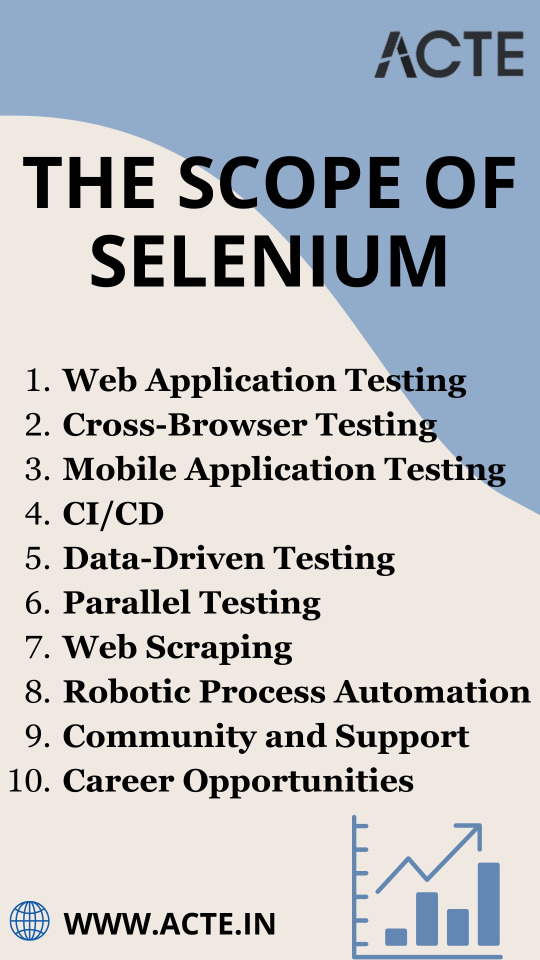
In conclusion, Selenium's scope is expansive and continuously evolving, encompassing web and mobile application testing, CI/CD integration, data-driven testing, web scraping, RPA, and more. To harness the full potential of Selenium and thrive in the dynamic field of software quality assurance, consider enrolling in training and certification programs. ACTE Technologies, a renowned institution, offers comprehensive Selenium training and certification courses. Their seasoned instructors and industry-focused curriculum are designed to equip you with the skills and knowledge needed to excel in Selenium testing and automation. Explore ACTE Technologies to elevate your Selenium skills and stay at the forefront of the software testing and automation domain, where excellence is the ultimate benchmark of success.
3 notes
·
View notes
Text
No Code Testing: The Future of Software Quality Assurance

Introducing the No Code Revolution in Software Testing
No code testing stands out as a game-changer in the modern software landscape. The concept allows teams to create, execute, and monitor tests without deep technical knowledge or coding expertise. ideyaLabs leads this revolution. The company empowers teams to streamline their workflows and enhance project delivery speeds. In the world of rapid digital transformation, automation now sits at the core of reliable software solutions.
Simplifying Test Automation with No Code Platforms
Every software project demands comprehensive testing for quality and reliability. Traditional test automation often requires knowledge of programming languages, complex frameworks, and dedicated testing roles. No code testing platforms from ideyaLabs bridges this gap. Users design, run, and validate test cases visually with drag-and-drop interfaces. The approach democratizes software quality, allowing more teams and stakeholders to contribute to robust testing processes.
The Power of Visual Workflow Creation
Visual workflows replace lines of code. Testers map out user journeys and key application functionalities by connecting building blocks. These blocks represent actions such as clicks, form submissions, and page validations. ideyaLabs crafts intuitive interfaces so testers focus on outcomes, not syntax. Freely design end-to-end tests, regression tests, and usability scenarios. Teams diagnose issues quickly and iteratively improve products.
Faster Time-to-Market for Digital Solutions
Speed remains essential in today’s software delivery cycle. Manual testing or traditional, code-based automation increases lead times. No code testing platforms from ideyaLabs drive major gains in time-to-market. Teams build and execute comprehensive automation suites with minimal ramp-up. Deployment cycles are shortened. Products reach users faster, giving businesses a decisive competitive advantage. Teams address market demands with agility.
Optimizing Team Collaboration Across All Roles
Bottlenecks form when only specialized testers can automate complex scenarios. No code testing by ideyaLabs removes these barriers. Business analysts, developers, product managers, and QA engineers work from a unified platform. All stakeholders engage in defining, refining, and running automated tests. This collaboration eliminates knowledge silos. Stakeholders align around shared business goals, resulting in higher-quality releases and fewer misunderstandings.
Scaling Test Coverage Without Resource Constraints
Scalability remains a challenge in traditional automation. As applications grow, maintaining test suites requires significant code management. ideyaLabs' no code testing automates scalability. Teams easily create tests for new features, enhancements, and bug fixes. The platform allows seamless expansion without ballooning resources. Organizations deliver more reliable software even as project scopes grow. Automated reports highlight gaps and opportunities for further coverage.
Enhancing Application Security and Compliance
Modern applications must meet the highest standards for data privacy and security. No code testing solutions by ideyaLabs incorporate robust security checks. Automated tests scan for vulnerabilities, data leaks, and compliance violations. Teams verify adherence to regulatory frameworks from the earliest development stages. Automated scripts repeat validation processes across every build, ensuring continuous protection for user data and business-sensitive information.
Reducing Human Errors in Test Execution
Manual testing involves repetitive actions. Human fatigue and oversight can lead to missed errors or inconsistencies. Automated no code testing prevents such lapses. ideyaLabs' platform ensures every test executes precisely as designed, every single time. Detailed reporting reveals failed steps and unexpected behaviors. Teams focus on analysis and remediation, relying on the platform for flawless consistency in testing.
Seamless Integration with Existing DevOps Workflows
Software teams strive for continuous integration and continuous delivery (CI/CD). No code testing strengthens this goal. ideyaLabs provides integrations with deployment pipelines, source control systems, and notification channels. Automation becomes an integral part of build and release cycles. Teams execute test suites automatically on every code push. Feedback loops shrink, allowing for rapid iteration and fewer production issues.
Supporting Complex Applications Across Devices and Environments
Applications now function across varied devices, browsers, and environments. Ensuring consistent performance is essential. ideyaLabs' no code testing covers these bases. Teams define test parameters for mobile, tablet, desktop, and cross-browser conditions. Centralized dashboards provide a comprehensive view of application health. QA teams receive instant feedback for every environment, reducing the risk of user-facing errors.
Lowering the Barrier for Test Automation Adoption
Automated testing revolutionizes software quality, but many organizations hesitate due to high entry barriers. IdeyaLabs eliminates these obstacles. Test creation no longer requires programming upskilling or extended onboarding. Users interact with the platform using familiar workflows and straightforward interfaces. This accessibility opens automation opportunities for organizations of all sizes, from startups to enterprises.
Strengthening Customer Trust with Reliable Software Releases
Customers expect seamless, high-performance experiences. Software glitches and bugs erode trust. No code testing with ideyaLabs instills reliability in the delivery pipeline. Rigorous, automated validation ensures every release meets customer expectations for quality and stability. Frequent, dependable updates boost user satisfaction and brand reputation.
Driving Innovation Through Continuous Test Automation
Innovation thrives on rapid experimentation and feedback. No code testing frameworks enable iterative development and innovation. ideyaLabs provides tools for teams to prototype, test, and release new features confidently. Fast, automated testing cycles create space for creative ideas. Teams focus on delivering unique value, not debugging scripts or managing code-based frameworks.
No Code Testing by ideyaLabs: Transforming the QA Journey
No code testing defines the modern approach to quality assurance. ideyaLabs educates teams, empowers businesses, and drives software excellence without barriers. Quality, speed, collaboration, and reliability coexist in a single platform. Organizations redefine their software delivery by trusting in intuitive, scalable, and powerful no code solutions.
Start Your No Code Testing Journey With ideyaLabs
Every organization can harness the power of automation. ideyaLabs provides guidance, platform, and expertise for seamless no code testing adoption. Begin your journey toward uncompromising software quality, efficiency, and innovation. Future-proof your delivery pipeline. Trust ideyaLabs to transform your software testing landscape through the cutting edge of no code automation.
0 notes
Text
What Are the Top 10 Software Testing Trends in 2025?
As we step into 2025, the software testing landscape continues to evolve, driven by advancements in technology and changing business needs. Staying ahead of these trends is crucial for organizations to ensure quality, speed, and innovation. Let’s explore the top 10 software testing trends shaping the industry in 2025. 1. AI-Powered Testing AI and machine learning are revolutionizing software testing. From predictive analytics to automated test case generation, AI is improving test accuracy and efficiency.
● Automated bug detection and classification
● Enhanced test case prioritization
● Smarter regression testing
2. Hyperautomation in Testing Hyperautomation extends beyond traditional automation by integrating AI, machine learning, and robotic process automation (RPA) to create end-to-end testing solutions.
● Streamlined workflows
● Reduction in manual intervention
● Enhanced scalability and speed
3. Shift-Left Testing The shift-left approach emphasizes early testing in the development lifecycle, enabling faster feedback and issue resolution.
● Early detection of defects.
● Integration with CI/CD pipelines.
● Improved collaboration between developers and testers.
4. Test Automation for IoT Devices With the Internet of Things (IoT) expanding, specialized testing frameworks are being developed to ensure seamless performance and security of interconnected devices.
● Real-time data validation.
● Security and compliance testing.
● Device interoperability checks.
5. Performance Engineering Over Performance Testing Performance engineering focuses on optimizing the entire system's performance rather than just identifying bottlenecks.
● Proactive performance monitoring.
● Integration with DevOps workflows.
● Continuous performance optimization.
6. Blockchain Testing As blockchain applications grow, testing methodologies are evolving to address their unique requirements.
● Smart contract testing.
● Security and encryption validation.
● Performance and scalability assessments.
7. Cybersecurity Testing With cyber threats becoming more sophisticated, robust cybersecurity testing is essential to safeguard applications.
● Penetration testing.
● Vulnerability assessments.
● Compliance with data protection regulations.
8. Low-Code/No-Code Testing The rise of low-code/no-code platforms has simplified testing, enabling non-technical users to contribute to the QA process.
● Visual test case design.
● Reduced dependency on coding expertise.
● Faster test execution.
9. Cloud-Based Testing Cloud computing continues to dominate the testing landscape, offering scalable and flexible solutions for organizations.
● On-demand testing environments.
● Cost-effective scalability.
● Integration with remote and distributed teams.
10. Testing for Sustainability Sustainability is becoming a critical focus, and software testing is no exception. Testing practices are evolving to assess energy consumption and environmental impact.
● Energy efficiency testing.
● Carbon footprint analysis of software.
● Promoting green IT practices.
Conclusion The software testing industry in 2025 is marked by innovation, agility, and a focus on quality. By embracing these trends, organizations can stay competitive, deliver superior user experiences, and meet the demands of a dynamic market. Whether it’s leveraging AI, ensuring cybersecurity, or adopting sustainable practices, the future of software testing is both exciting and transformative.
#software testing training#automation testing training in ahmedabad#selenium training in ahmedabad#manual testing#unicodetechnologies
0 notes
Text
API Testing in Web Applications – A Comprehensive Guide
API testing is a critical part of quality assurance in modern web applications, where front-end interfaces depend heavily on APIs to interact with servers, databases, and third-party services. Unlike traditional UI testing, API testing allows developers and QA teams to validate core application functionality at the service level—before the UI is even built.
In web applications, APIs handle user authentication, data retrieval, form submissions, and complex business workflows. Testing these APIs ensures that endpoints respond correctly to various requests, handle edge cases, and remain secure under load. Key test types include functional testing, performance testing, security testing, and contract testing.
Popular tools for web API testing include Postman, Rest Assured, Swagger, and JMeter. These tools allow testers to create, automate, and validate requests such as GET, POST, PUT, and DELETE, ensuring accurate status codes, response bodies, and headers.
Integrating API testing into CI/CD pipelines accelerates feedback, reduces regression risks, and ensures that broken APIs are caught early. It’s especially valuable in Agile environments where rapid development cycles demand robust, automated testing frameworks.
In short, API testing is not just a backend task—it’s a foundation for building fast, reliable, and scalable web applications.
#software testing#software testing company#software testing services#automation tools#automation testing#qa services#qa software#qa testing services#software product#qa testing company#qa consulting services#performance testing tools#manual testing tools#test management tool#qa testing software#automation tools for testing#automated software testing#api testing
0 notes
Text
Shorter Feedback Loops Using Continuous Integration Testing
Every commit deserves instant validation. Continuous integration testing at QASource ensures code quality and catches regressions quickly. With continuous integration testing, we support agile teams that push frequent releases.
0 notes
Text
Top Quality Engineer Interview Questions: A Must-Read Guide for Job Seekers and Recruiters
Whether you’re preparing for your next job interview or hiring for a technical role, understanding the most relevant quality engineer interview questions is crucial. As quality assurance becomes more integral to product and software development, the demand for skilled QA professionals continues to rise.
Why Quality Engineering Is Critical in Today’s Tech Industry
With the growing emphasis on performance, compliance, and customer satisfaction, quality engineers play a key role across various industries — especially in software development and manufacturing. Their expertise ensures that products meet strict quality standards and function as intended.
If you’re a recruiter or a candidate, it’s essential to be familiar with both technical interview questions for quality engineers and behavioral ones. Fortunately, Loma Technology has compiled a comprehensive guide of the top QA interview questions and answers to help you stay ahead.
Most Common Interview Questions for Quality Engineer Positions
Here are some of the frequently asked categories of questions:
✅ Quality Assurance Engineer Interview Questions: These focus on methodologies like Agile, Scrum, and Six Sigma, as well as tools like JIRA and Selenium.
🔍 Quality Control Interview Questions: These test understanding of inspection methods, product audits, and compliance protocols.
🧪 QA Testing Interview Questions: Including both manual and automated testing concepts, regression testing, and test plan design.
🧠 Software Quality Engineer Interview Questions: Aimed at software professionals, these may include API testing, bug tracking systems, and version control.
Each of these areas highlights the candidate’s analytical mindset, attention to detail, and technical competence.
A Resource for Recruiters and Fresh Graduates
Are you preparing for your first job as a QA engineer? Our blog also features helpful quality engineer interview questions for freshers, along with practical answers and tips. It’s ideal for both students and professionals seeking to level up their interview game.
And if you’re a hiring manager? This guide provides ready-to-use, effective QA interview questions and answers to evaluate your candidates fairly and efficiently.
Read the Full Guide Now
Explore the complete list of quality engineer interview questions tailored to today’s fast-paced industries. This resource is a must-read for:
QA professionals preparing for interviews
HR teams conducting technical evaluations
Engineering students entering the job market

0 notes
Text
Data Analytics Training in Kerala: Unlocking Opportunities in the Age of Data
In today’s information-driven economy, the ability to make data-driven decisions has become a core function of successful businesses. Whether it's understanding customer behavior, optimizing internal operations, forecasting trends, or creating new products, data analytics is at the heart of modern strategy. For those looking to break into this transformative field, enrolling in Data Analytics training in Kerala can be the ideal starting point for a rewarding and future-proof career.
What Is Data Analytics?
At its core, data analytics involves examining large volumes of data to discover patterns, correlations, and trends. These insights are then used to inform strategic decisions. The field encompasses a wide range of processes including:
Data Collection – Gathering data from various sources.
Data Cleaning – Ensuring accuracy by correcting or removing erroneous data.
Data Analysis – Using statistical techniques to make sense of the data.
Data Visualization – Presenting data in a graphical or interactive format.
Predictive Modeling – Anticipating future outcomes based on historical trends.
Professionals trained in these skills help businesses stay competitive and agile in a data-centric world.
Why Is Data Analytics Important Today?
The amount of data generated by organizations and individuals is growing exponentially. From mobile apps and websites to sensors and social media, we generate more data than ever before. However, raw data is meaningless unless it's analyzed and transformed into actionable insights. Here’s why Data Analytics training in Kerala is so important:
Business Intelligence: Analytics provides the foundation for critical business insights.
Competitive Advantage: Organizations that use data effectively outperform their competitors.
Cost Reduction: Identifying inefficiencies through data analysis can save companies time and money.
Customer Understanding: Data allows companies to better serve and understand their customers.
What You Will Learn in a Data Analytics Course
A well-structured Best Data Analytics training in Kerala provides learners with a complete skill set that includes both foundational and advanced techniques. Here are the core areas typically covered:
1. Statistics and Probability
These are essential for understanding data distributions, trends, and significance testing.
2. Data Management & SQL
You’ll learn how to retrieve and manipulate data from relational databases using SQL.
3. Data Visualization
Training in tools like Tableau, Power BI, or Python's Matplotlib and Seaborn helps bring your insights to life visually.
4. Python for Data Analytics
Python is one of the most widely used programming languages in data science. Courses will cover:
Pandas for data manipulation
NumPy for numerical analysis
Matplotlib/Seaborn for visualization
5. Machine Learning Basics
Some courses include basic machine learning concepts such as:
Regression and classification
Clustering
Decision trees
6. Capstone Projects
Most programs culminate in hands-on projects that apply what you've learned to real-world scenarios, such as analyzing customer churn, market trends, or healthcare data.
Who Should Enroll in a Data Analytics Training Program?
One of the strengths of the field is its accessibility to people from various academic and professional backgrounds. You don’t need to be a programmer to start, though some technical aptitude certainly helps. Data Analytics training in Kerala is suitable for:
Fresh graduates seeking job-oriented training
Working professionals looking to shift careers
Engineers and developers upskilling for tech roles
Business managers looking to make data-informed decisions
Entrepreneurs wanting to use data for better decision-making
Career Opportunities After Data Analytics Training
With demand on the rise, the job market for data professionals is flourishing. Upon completing your training, you can pursue roles like:
Data Analyst
Business Intelligence Analyst
Data Engineer
Operations Analyst
Data Scientist (with further specialization)
These roles exist across industries such as healthcare, finance, retail, logistics, education, and IT services.
The Advantage of Studying in Kerala
Kerala has positioned itself as a leading hub for IT and tech education in India. Choosing to pursue Data Analytics training in Kerala offers several benefits:
1. Quality Educational Ecosystem
Kerala is home to a wide array of technical institutions, private academies, and online education providers.
2. Strong IT Infrastructure
With IT parks in Kochi, Trivandrum, and Calicut, Kerala offers real job opportunities for tech and analytics graduates.
3. Affordable Learning
Compared to cities like Bangalore, Pune, or Hyderabad, the cost of living and learning in Kerala is much more budget-friendly.
4. Industry-Relevant Curriculum
Many local institutions partner with companies or employ instructors from industry to ensure students are learning relevant, applied skills.
Key Features to Look for in a Training Program
When selecting your program, consider these essential elements:
Experienced Trainers – Preferably with real-world data analytics experience.
Project-Based Learning – Look for programs that emphasize hands-on practice.
Updated Curriculum – Ensure that tools and techniques reflect current industry standards.
Placement Assistance – An institute that supports your transition to employment adds significant value.
Certification – Globally or nationally recognized certifications boost your resume.
Zoople Technologies: Leading the Way in Data Analytics Training in Kerala
When it comes to industry-aligned, hands-on Data Analytics training in Kerala, Zoople Technologies stands out as one of the most trusted names in the field. With a mission to bridge the skills gap between education and employment, Zoople provides comprehensive programs that combine theoretical knowledge with real-world application.
Why Choose Zoople Technologies?
Expert Mentorship: Instructors with years of industry experience in analytics, data science, and software development.
Live Projects: Learners work on real business datasets and scenarios that mimic actual workplace environments.
Modern Tools and Techniques: The curriculum includes the latest tools like Python, Tableau, SQL, and machine learning foundations.
Flexible Learning Options: Both in-classroom and online training modes available.
Career Support: Zoople offers resume writing, interview preparation, and placement drives.
Student Success Stories: Many of Zoople’s alumni have successfully transitioned into roles at leading companies across India and abroad.
By choosing Zoople Technologies, you're not just learning a subject—you’re stepping into a career with confidence.
Final Thoughts
As the digital landscape continues to evolve, the importance of data-driven decision-making becomes even more pronounced. Building skills in data analytics equips you with the tools to thrive in virtually any industry, offering high-growth opportunities and career flexibility.
Enrolling in Data Analytics training in Kerala is a smart step toward achieving these goals—and doing so with a reputable and forward-thinking institute like Zoople Technologies ensures you’re in the best hands. With its experienced faculty, real-world curriculum, and career-focused approach, Zoople is paving the way for the next generation of data professionals.
If you’re ready to turn your interest in data into a dynamic career, Zoople Technologies is your ideal launchpad.
0 notes
Text
��Shift Left Your Safety-Critical Software Testing With Test Automation

In the realm of safety-critical software — such as systems used in aerospace, automotive, healthcare, and industrial control — the stakes are exceptionally high. A single software defect can lead to catastrophic outcomes, including loss of life, significant financial loss, or environmental damage. Ensuring the highest levels of software quality, safety, and security is not just a best practice; it’s an imperative.
One of the most effective strategies to achieve this is by adopting a “Shift Left” approach in software testing, complemented by robust test automation. This methodology emphasizes the early integration of testing activities in the software development lifecycle (SDLC), aiming to detect and address defects as soon as possible.
Understanding When Bugs Are Introduced & Detected
Software defects often originate during the early phases of development, such as requirements gathering and design. However, traditional testing approaches tend to identify these defects much later, during system integration or acceptance testing. This delay in detection can exponentially increase the cost and complexity of fixing issues.
For instance, studies have shown that rectifying a defect found during system testing can cost up to 40 times more than fixing the same defect during the coding phase . Moreover, in safety-critical systems, late detection of defects can lead to extensive rework, certification delays, and potential safety risks.
Shift-Left Testing Through Test Automation
The “Shift Left” testing paradigm advocates for initiating testing activities early in the SDLC. By integrating testing into the initial stages — such as requirements analysis and design — teams can identify and mitigate defects before they propagate.
Test automation plays a pivotal role in this approach. Automated tests can be executed rapidly and repeatedly, providing immediate feedback to developers. This continuous validation ensures that code changes do not introduce regressions and that the software adheres to specified requirements from the outset.
Advantages of Test Automation
Supporting Agile & CI/CD Pipelines
Incorporating test automation aligns seamlessly with Agile methodologies and Continuous Integration/Continuous Deployment (CI/CD) pipelines. Automated tests can be triggered with every code commit, ensuring that new changes are continuously validated. This integration facilitates rapid development cycles while maintaining high-quality standards.
Supporting Software Inspections
Automated tools can assist in static code analysis, identifying potential issues such as code smells, security vulnerabilities, and non-compliance with coding standards. These inspections, conducted early in the development process, help maintain code quality and reduce the likelihood of defects.
Automating Coding Standard Compliance
Adherence to coding standards is crucial in safety-critical systems. Automated tools can enforce compliance by analyzing code against predefined rulesets, ensuring consistency and reducing human error. This automation not only improves code quality but also simplifies the certification process.
Increasing Testing Productivity
Automation enhances testing efficiency by enabling the execution of extensive test suites without manual intervention. This capability allows teams to focus on exploratory and complex testing scenarios, improving overall test coverage and effectiveness.
Automating Certification Documentation
Safety-critical software often requires rigorous certification processes. Automated testing tools can generate detailed reports and logs, providing the necessary evidence for compliance with industry standards. This automation streamlines the certification process, reducing time and effort.
Accelerating Reuse of Legacy Software
Test automation facilitates the validation of legacy codebases by enabling regression testing and integration with new modules. This capability supports the reuse of existing software components, reducing development time and costs.
Improving Quality, Safety, & Security
By detecting defects early and ensuring consistent testing practices, automation enhances the overall quality, safety, and security of software systems. This proactive approach minimizes the risk of failures in production environments, which is especially critical in safety-sensitive applications.
What Is the Impact of Shift-Left Testing?
Implementing a Shift Left testing strategy has profound implications for software development:
Cost Reduction: Early detection of defects significantly lowers the cost of remediation. Fixing issues during the requirements or design phase is considerably less expensive than addressing them post-deployment .
Improved Quality: Continuous testing ensures that defects are identified and resolved promptly, leading to higher-quality software.
Faster Time-to-Market: By integrating testing early, development cycles become more efficient, enabling quicker releases without compromising quality.
Enhanced Collaboration: Early testing fosters collaboration between developers, testers, and stakeholders, ensuring that requirements are well-understood and met.
isk Mitigation: Proactively identifying and addressing defects reduces the likelihood of critical failures in production, safeguarding users and organizations.
Navigating Safety-Critical Software Costs With a Shift-Left Strategy
Safety-critical software development is inherently complex and resource-intensive. However, adopting a Shift Left testing approach can mitigate these challenges by:
Reducing Rework: Early detection of defects minimizes the need for extensive rework, saving time and resources.
Streamlining Certification: Automated testing and documentation support compliance with industry standards, simplifying the certification process.
Enhancing Predictability: Continuous testing provides real-time insights into software quality, enabling better project planning and risk management.
Facilitating Maintenance: A robust testing framework ensures that future modifications can be implemented with confidence, reducing maintenance costs.
In conclusion
integrating Shift Left testing with test automation is a strategic imperative for safety-critical software development. This approach not only enhances software quality and safety but also optimizes development processes, reduces costs, and accelerates time-to-market. By embracing early testing and automation, organizations can navigate the complexities of safety-critical systems with greater assurance and efficiency.
0 notes
Text
Revolutionizing Software Testing: The Comprehensive Benefits of Automation Testing with Selenium
In the ever-evolving landscape of software development, the role of testing is paramount to ensure the reliability and performance of applications. Automation testing, particularly with Selenium, has emerged as a game-changer, offering a plethora of benefits that streamline the testing process and contribute to the overall efficiency of software development. Embracing Selenium's capabilities becomes even more accessible and impactful with Selenium Training. This training equips individuals with the skills and knowledge to harness the full potential of Selenium, enabling them to proficiently navigate web automation challenges and contribute effectively to their respective fields. In this exploration, we delve into the comprehensive advantages of automation testing with Selenium and its transformative impact on the software testing ecosystem.

1. Time Efficiency: Accelerating Testing Processes
Automation testing with Selenium is synonymous with time efficiency. By automating the execution of test cases, Selenium enables testers to run multiple scripts simultaneously. This parallel execution across various browsers and platforms significantly reduces testing time compared to the sequential nature of manual testing. Time efficiency is a crucial aspect in the fast-paced world of software development, allowing teams to deliver products with speed and agility.
2. Reusability of Test Scripts: Maximizing Code Investment
One of the standout features of Selenium is the reusability of test scripts. Test scripts developed for specific scenarios can be easily adapted and reused for similar test cases. This modularity not only expedites script development but also enhances maintainability. The ability to reuse scripts across different scenarios contributes to code consistency and reduces duplication of efforts, ensuring an optimized and efficient testing process.
3. Consistency and Accuracy: Eliminating Human Errors
Automation testing eliminates the inherent risks associated with human errors in manual testing. Selenium ensures consistent and precise test execution, adhering to predefined test scenarios without deviations. This consistency is particularly vital for repetitive test cases and regression testing, where precision and accuracy are paramount. By minimizing the risk of human errors, Selenium enhances the reliability of test results.
4. Parallel Execution: Optimizing Resource Utilization
Selenium's compatibility with tools like Selenium Grid enables parallel execution of test scripts on multiple machines. This not only expedites test runs but also optimizes resource utilization. Test scripts can be simultaneously executed on different configurations, browsers, and platforms, ensuring efficient use of available resources. Parallel execution is a key factor in scalability, making Selenium a preferred choice for projects of varying sizes.
5. Faster Feedback in Continuous Integration (CI) Pipelines: Integrating Testing with Development
Automation testing seamlessly integrates with Continuous Integration (CI) pipelines, a fundamental aspect of modern software development practices. Selenium's compatibility with CI tools like Jenkins allows automated tests to be executed automatically with every code change. This facilitates faster feedback to developers, enabling early detection of bugs and ensuring a smoother integration process.
6. Comprehensive Test Coverage: Ensuring Thorough Validation
One of the inherent strengths of automation testing with Selenium is its ability to achieve comprehensive test coverage. Selenium scripts can cover a wide range of scenarios, including positive and negative test cases, edge cases, and various user inputs. This thorough validation ensures that applications are tested comprehensively, contributing to a robust and reliable software product.
7. Regression Testing: Validating Code Changes with Confidence
Selenium excels in performing regression testing, a critical aspect of software development, especially in agile environments. Automated scripts can quickly rerun test cases to validate that new code changes haven't adversely impacted existing functionalities. This rapid and consistent validation of code changes ensures that software updates are introduced with confidence and minimal disruption to existing features.
8. Cost Savings: Balancing Initial Investment with Long-Term Efficiency
While the initial setup and script development for automation testing may require an investment of time and resources, the long-term cost savings are significant. Automation testing with Selenium leads to increased efficiency, faster testing cycles, and reduced reliance on manual testing efforts. This results in a more cost-effective testing process over time, making it a prudent investment for organizations looking to optimize their testing workflows.
9. Cross-Browser and Cross-Platform Testing: Ensuring Compatibility Everywhere
Selenium's versatility shines in its ability to conduct cross-browser and cross-platform testing. Test scripts can be executed across various browsers (Chrome, Firefox, Safari, etc.) and platforms (Windows, macOS, Linux), ensuring that applications function consistently across diverse environments. This capability is crucial for reaching a broad user base with different preferences and devices.
10. Enhanced Test Report Generation: Facilitating In-Depth Analysis
Automation testing is not just about running tests; it's about gaining insights into the application's health. Selenium provides detailed and customizable test reports, offering valuable information on test execution results. Tools like TestNG and JUnit enhance reporting capabilities, aiding in comprehensive test result analysis. This visibility into test outcomes enables teams to make informed decisions and prioritize areas that require attention.
11. Scalability: Adapting to Project Growth
Selenium's scalability is a key attribute that makes it suitable for projects of varying sizes. As a project evolves, additional machines can be seamlessly integrated as nodes in the Selenium Grid. This scalability ensures that automation testing remains efficient and effective, regardless of the project's growth trajectory.
12. Improved Test Maintenance: Adapting to Changing Application Landscapes
In the dynamic world of software development, applications undergo frequent changes. Selenium excels in adapting to these changes, making test maintenance more straightforward. When there are updates or modifications in the application, corresponding adjustments can be made efficiently to the automated scripts. This agility in test maintenance is crucial for ensuring that automated tests remain aligned with the evolving application landscape.
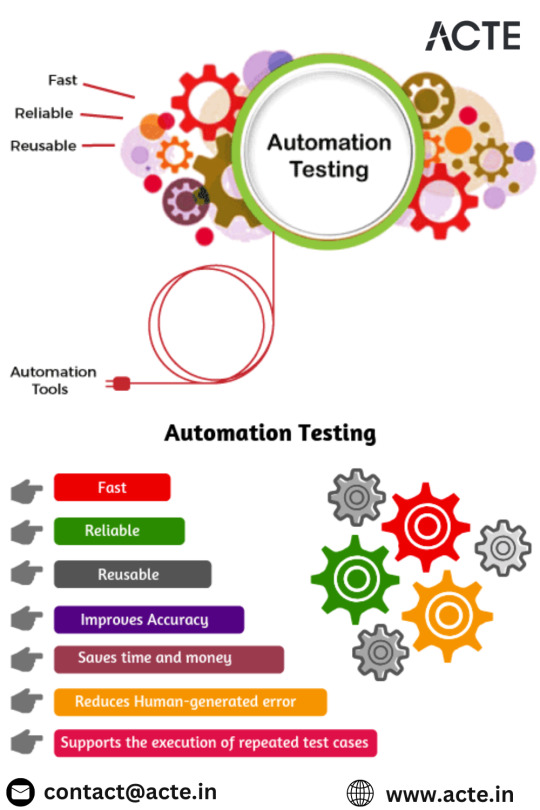
In conclusion, automation testing with Selenium is a transformative force in the realm of software testing. Its comprehensive benefits, ranging from time efficiency and reusability to scalability and improved test maintenance, make it an indispensable tool for modern software development practices. As organizations increasingly prioritize agility, efficiency, and reliability in their development processes, Selenium stands out as a cornerstone in achieving these objectives. Embracing automation testing with Selenium not only accelerates the testing lifecycle but also contributes to delivering high-quality software products that meet the demands of today's dynamic and competitive market. To unlock the full potential of Selenium and master the art of web automation, consider enrolling in the Top Selenium Training Institute. This training ensures that individuals gain comprehensive insights, hands-on experience, and practical skills to excel in the dynamic field of web testing and automation.
2 notes
·
View notes
Text
The Trendy Path to Web Automation: Selenium's Effortless Approach
In the vast expanse of the digital landscape, automation has emerged as the North Star, guiding us toward efficiency, precision, and productivity. It's in this realm of automated wonders that Selenium, a powerful open-source framework, takes center stage. Selenium isn't just a tool; it's a beacon of possibilities, a bridge between human intent and machine execution. As we embark on this journey, we'll dive deep into the multifaceted world of Selenium, exploring its key role in automating web browsers and unleashing its full potential across various domains.

Selenium: The Backbone of Web Automation
Selenium is not just a tool in your toolkit; it's the backbone that supports your web automation aspirations. It empowers a diverse community of developers, testers, and data enthusiasts to navigate the complex web of digital interactions with precision and finesse. It's more than lines of code; it's the key to unlocking a world where repetitive tasks melt away, and possibilities multiply.
1. Cross-Browser Compatibility: Bridging the Browser Divide
One of Selenium's defining strengths is its cross-browser compatibility. It extends a welcoming hand to an array of web browsers, from the familiarity of Chrome to the reliability of Firefox, the edge of Edge, and beyond. With Selenium as your ally, you can be assured that your web automation scripts will seamlessly traverse the digital landscape, transcending the vexing barriers of browser compatibility.
2. Programming Language Support: Versatility Unleashed
Selenium's versatility is the cornerstone of its appeal. It doesn't tie you down to a specific programming language; instead, it opens a world of possibilities. Whether you're fluent in the elegance of Java, the simplicity of Python, the resilience of C#, the agility of Ruby, or others, Selenium stands ready to complement your expertise.
3. Interaction with Web Elements: Crafting User Experiences
Web applications are complex ecosystems, abundant with buttons, text fields, dropdown menus, and a myriad of interactive elements. Selenium's prowess shines as it empowers you to interact with these web elements as if you were sitting in front of your screen, performing actions like clicking, typing, and scrolling with surgical precision. It's the tool you need to craft seamless user experiences through automation.
4. Automated Testing: Elevating Quality Assurance
In the realm of quality assurance, Selenium assumes the role of a vigilant guardian. Its automated testing capabilities are a testament to its commitment to quality. As a trusted ally, it carefully examines web applications, identifying issues, pinpointing regressions, and uncovering functional anomalies during the development phase. With Selenium by your side, you ensure the delivery of software that stands as a benchmark of quality and reliability.
5. Web Scraping: Harvesting Insights from the Digital Terrain
In the era of data-driven decision-making, web scraping is a strategic endeavor, and Selenium is your trusty companion. It equips you with the tools to extract data from websites, scrape valuable information, and store it for in-depth analysis or integration into other applications. With Selenium's data harvesting capabilities, you transform the digital terrain into a fertile ground for insights and innovation.
6. Integration: The Agile Ally
Selenium is not an isolated entity; it thrives in collaboration. Seamlessly integrating with an expansive array of testing frameworks and continuous integration (CI) tools, it becomes an agile ally in your software development lifecycle. It streamlines testing and validation processes, reducing manual effort, and fostering a cohesive development environment.

In conclusion, Selenium is not just a tool; it's the guiding light that empowers developers, testers, and data enthusiasts to navigate the complex realm of web automation. Its adaptability, cross-browser compatibility, and support for multiple programming languages have solidified its position as a cornerstone of modern web development and quality assurance.
Yet, Selenium is merely one part of your journey in the realm of technology. In a world that prizes continuous learning and professional growth, ACTE Technologies emerges as your trusted partner. Whether you're embarking on a new career, upskilling, or staying ahead in your field, ACTE Technologies offers tailored solutions and world-class resources.
Your journey to success commences here, where your potential knows no bounds. Welcome to a future filled with endless opportunities, fueled by Selenium and guided by ACTE Technologies. As you navigate this web automation odyssey, remember that the path ahead is illuminated by your curiosity, determination, and the unwavering support of your trusted partners.
4 notes
·
View notes
Text
Transforming QA with Self Healing Test Automation

Development cycles move faster every day. QA teams face rising pressure to maintain quality with automated test suites. Changing code, shifting UI, and evolving requirements strain traditional automation frameworks. ideyaLabs adopts Self Healing Test Automation, creating stability where instability once ruled.
Defining Self Healing Test Automation
Self Healing Test Automation adapts automatically to changes in an application’s user interface. It minimizes human intervention when locators and elements change. Test scripts repair themselves. ideyaLabs uses these intelligent solutions to keep QA fast and accurate.
Challenges in Modern Test Automation
Conventional automation relies on fixed locators and hardcoded values. Updates in UI or logic often break tests. QA spends valuable time correcting failed scripts. Unreliable automation disrupts CI/CD pipelines. ideyaLabs recognizes these pain points and turns to Self Healing Test Automation for relief.
Technical Foundation of Self Healing Systems
Automation frameworks at ideyaLabs observe every test run. If tests fail due to missing elements or changed object properties, self healing mechanisms search for close matches. Automated systems update scripts with new locators based on similarity and context. Tests pass once again, keeping development and QA momentum high.
Immediate Benefits for Teams
Save manual script maintenance hours
Decrease test case failures
Preserve automation stability despite software updates
Support continuous delivery pipelines
Enhance focus on strategic testing efforts
ideyaLabs clients notice stronger release cycles and higher productivity in QA and development.
Handling Continuous Application Changes
Modern applications push new features weekly, even daily. Manual test maintenance can’t keep up. ideyaLabs leverages Self Healing Test Automation to ensure tests reliably adjust to UI and structural changes. Test failures drop. Maintenance time shrinks.
AI and Machine Learning in Action
Self Healing Test Automation relies on AI and machine learning. Systems at ideyaLabs record past locator changes and use pattern recognition to predict element updates. Algorithms evaluate multiple candidates for replacement and apply best matches. Each test cycle refines the learning process for even better efficiency.
Boosting Automation ROI
Test automation delivers value by reducing repetitive tasks and finding regressions. Self Healing Test Automation increases this value. ideyaLabs helps clients minimize ongoing maintenance spending. Robust test scripts last longer, building more trust in automation investments.
Streamlining DevOps Integration
CI/CD pipelines depend on reliable automated tests. Broken scripts stall deployments. ideyaLabs engineers implement Self Healing Test Automation, integrating it across development pipelines. Test stability improves. Deployments become faster and less risky.
Conquering Complexity in Modern Software
Modern web and mobile apps present nested structures, dynamic content, and interactive elements. Self Healing Test Automation at ideyaLabs adapts to these environments. Automated tests remain effective across dynamic lists, popups, and ever-changing layouts.
Best Practices for Successful Implementation
Use clear and maintainable coding standards
Centralize object repositories for easy locator management
Activate self healing features in chosen frameworks
Audit automated updates regularly for continued reliability
Track KPIs to evaluate improvements in automation performance
ideyaLabs recommends routine evaluations to optimize self healing outcomes.
Accelerating Agile QA Workflows
Agile teams need to release new features frequently. Self Healing Test Automation empowers ideyaLabs to provide up-to-date regression suites without constant script rewrites. QA keeps pace with sprints, focusing on valuable exploratory and acceptance testing.
Deliver Seamless End User Experiences
Stable test automation catches regression and functional bugs before release. End user satisfaction grows. ideyaLabs ensures every deployment protects the customer journey, building reliability into each application update.
Staying Ahead with Future Automation Trends
Innovation never stops in test automation. Self Healing Test Automation, driven by AI and self-learning technology, leads ideyaLabs and its partners toward the next era of software quality. Teams prepare for new frameworks, devices, and platforms with adaptable automation.
Why ideyaLabs Stands Out
Deep expertise in QA and automation
Proven adoption of Self Healing Test Automation
Custom technology solutions for every client
Unmatched commitment to test reliability and speed
ideyaLabs supports enterprises through every step of automation transformation.
Embark on Your Self Healing Automation Journey
Self Healing Test Automation changes the nature of quality assurance. QA teams reduce maintenance, protect automation investments, and keep releases dependable. ideyaLabs brings this future into reality, helping organizations thrive in 2025 and beyond. Connect with ideyaLabs to modernize your test automation today.
0 notes